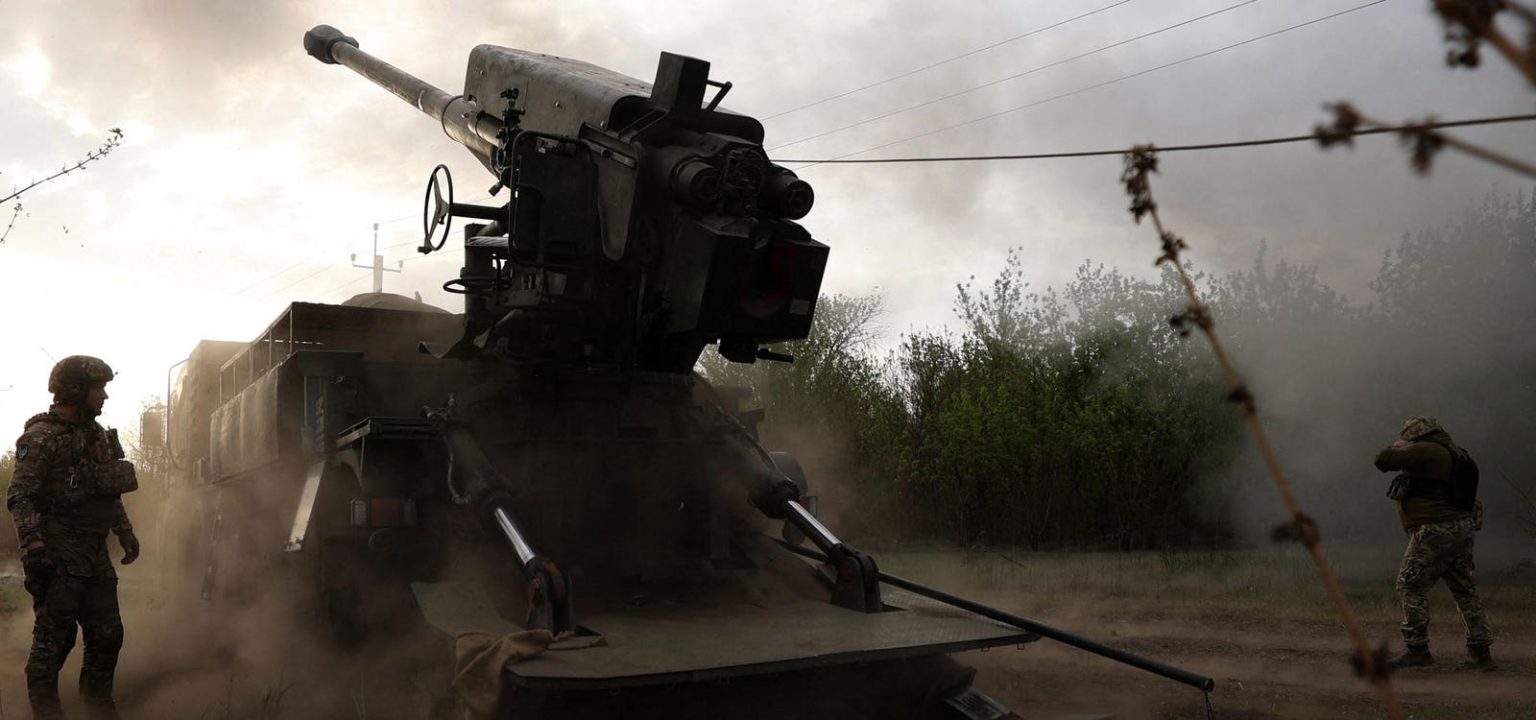While drones, electronic warfare, and artillery have played significant roles throughout the Russia-Ukraine war, many battlefield outcomes have been decided by a different technology: mines. As Western-provided ammunition starts to arrive at the Ukrainian frontlines, the 10,000 Remote Anti-Armor Mine Systems (RAAMS) included in the recent American aid package will replenish Ukraine’s supply of artillery-delivered mines. These systems arrive at a critical time, with Russian forces making advances in the Kharkiv Oblast, Luhansk Oblast, and the Donetsk Oblast. The RAAMS will provide Ukraine with crucial capabilities as they attempt to push back this renewed Russian offensive.
Each RAAMS round contains nine M718 or M741 anti-tank mines within a 155mm artillery shell. When fired, the RAAMS disperses these mines over a designated area. With a range of up to 17 kilometers, the system allows for long-distance deployment of a minefield. Upon hitting the ground, the mines activate and are designed to disable armored vehicles by targeting their vulnerable undercarriages. The M718 and M741 mines are equipped with magnetic sensors, such that they can detonate in the presence of a combat vehicle without requiring the vehicle to drive directly over it.
A key feature of these mines is their self-detonation capability. The M718 mines self-detonate after approximately 4 hours, while the M741 mines do so after about 48 hours. This self-detonation mechanism serves several important purposes. First, it minimizes the risk of collateral damage by ensuring that RAAMS-emplaced minefields, which are less precisely placed than traditional minefields, do not pose a prolonged threat. Second, it allows military units to transition rapidly from defensive to offensive operations, as the temporary nature of the minefields means they can advance without the risk of encountering their own mines. This dual benefit enhances both the safety and operational flexibility of Ukrainian forces, especially since the mines will be deployed in Ukrainian territory.
Although nine anti-tank mines per round might seem limited, a doctrinal minefield intended to disrupt an enemy advance only has a density of one mine per 200 square meters. As such, one RAAMS round can cover an area of 1,800 square meters. If a minefield is 100 meters deep, 55 RAAMS rounds could produce a minefield that is 1 kilometer long. Additionally, these systems do not include anti-personnel mines. While a variant of the RAAMS uses anti-personnel mines, Ukraine did not receive this system, as it has signed the Ottawa Treaty, which prohibits the use of anti-personnel mines.
As these rounds arrive at the Ukrainian frontlines, they will make an immediate impact on the battlefield. The Ukrainians have previously received 40,000 RAAMS rounds, which they have used extensively over the last two years of conflict. Consequently, they are experienced in using these rounds and can readily integrate them into their defensive maneuvers.
Russia is conducting a number of offensive operations, with their main effort focused on the Kharkiv Oblast in a push towards Kharkiv City. Around the town of Vovchansk, which is northeast of Kharkiv City, Ukraine has launched a successful series of counterattacks to reclaim territory. RAAMS rounds are particularly useful for counterattacks, as they allow the Ukrainians to quickly establish temporary obstacle belts to secure recaptured areas. Additionally, with Russia preparing for a new concentrated effort to push through Ukrainian defenses, Ukraine can swiftly establish new RAAMS-emplaced minefields to disrupt Russian maneuvers. By doing so, they can force Russian forces to take routes that make them more vulnerable to Ukrainian artillery.
Meanwhile, in the Luhansk Oblast, the Russian forces are attempting to break through the Ukrainian defenses along the Kupyansk-Svatove-Kreminna line. Should Russian forces penetrate the Ukrainian lines, a hastily emplaced RAAMS minefield could prevent them from exploiting the breakthrough. Similarly, in the Donetsk Oblast, Russian forces are advancing towards Chasiv Yar in an effort to take this key city. In this dynamic battlefield, a RAAMS-emplaced minefield could be used by the Ukrainians to protect their flanks from a Russian attack.
The war is at a critical juncture, and the current Russian offensive has the potential to make significant gains. Consequently, the Ukrainians must hold off this offensive to avoid losing a substantial portion of their country. The recent aid package from the United States is arriving just in time to support the Ukrainian efforts. In particular, the 10,000 RAAMS rounds will make an immediate impact on the battlefield.
Read the full article here




